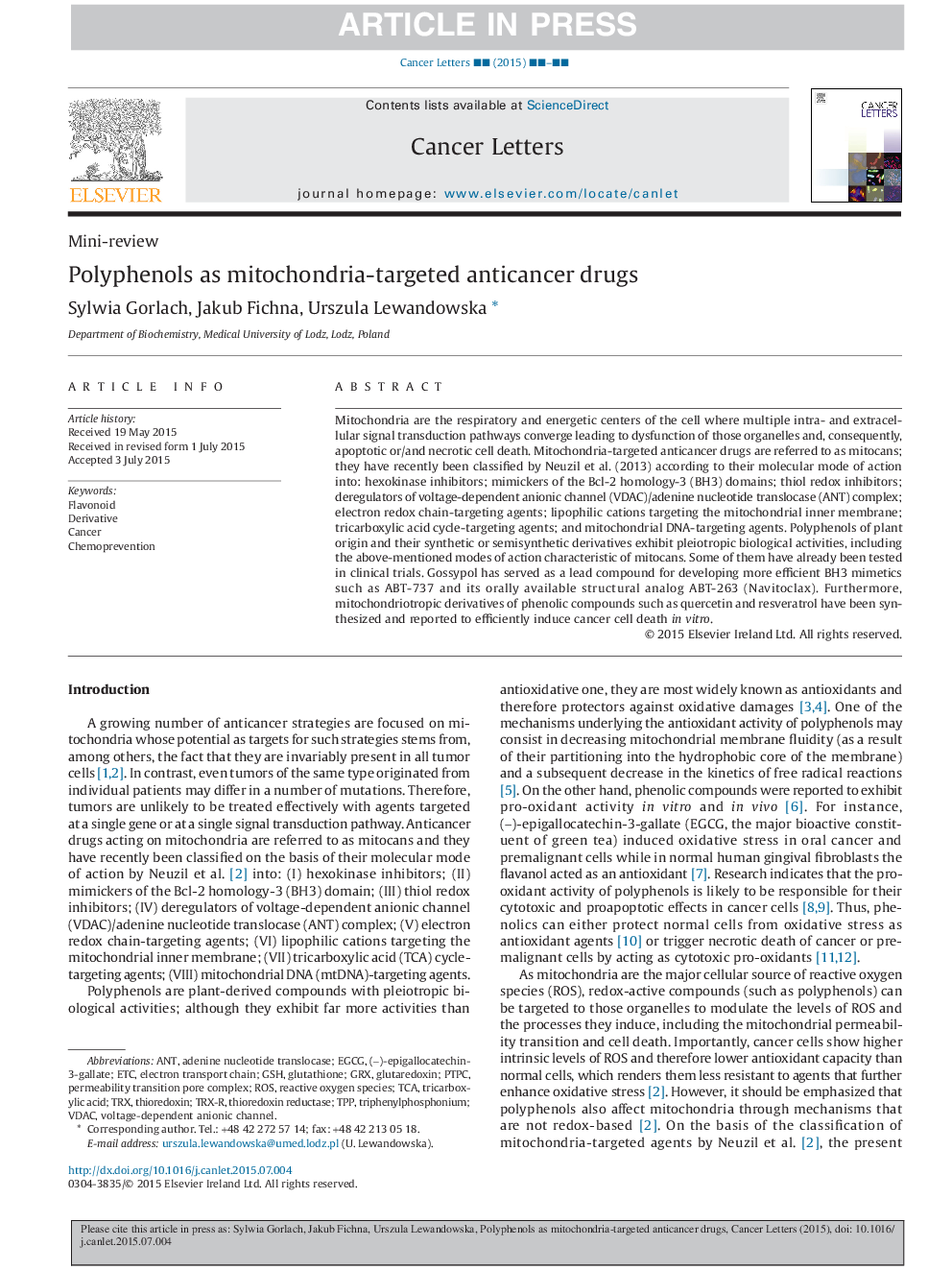| Article ID | Journal | Published Year | Pages | File Type |
|---|---|---|---|---|
| 10899452 | Cancer Letters | 2015 | 9 Pages |
Abstract
Mitochondria are the respiratory and energetic centers of the cell where multiple intra- and extracellular signal transduction pathways converge leading to dysfunction of those organelles and, consequently, apoptotic or/and necrotic cell death. Mitochondria-targeted anticancer drugs are referred to as mitocans; they have recently been classified by Neuzil et al. (2013) according to their molecular mode of action into: hexokinase inhibitors; mimickers of the Bcl-2 homology-3 (BH3) domains; thiol redox inhibitors; deregulators of voltage-dependent anionic channel (VDAC)/adenine nucleotide translocase (ANT) complex; electron redox chain-targeting agents; lipophilic cations targeting the mitochondrial inner membrane; tricarboxylic acid cycle-targeting agents; and mitochondrial DNA-targeting agents. Polyphenols of plant origin and their synthetic or semisynthetic derivatives exhibit pleiotropic biological activities, including the above-mentioned modes of action characteristic of mitocans. Some of them have already been tested in clinical trials. Gossypol has served as a lead compound for developing more efficient BH3 mimetics such as ABT-737 and its orally available structural analog ABT-263 (Navitoclax). Furthermore, mitochondriotropic derivatives of phenolic compounds such as quercetin and resveratrol have been synthesized and reported to efficiently induce cancer cell death in vitro.
Keywords
TrxVDACTPPPTPCGRxTCAGSHEGCGANT(−)-Epigallocatechin-3-gallateROStricarboxylic acidadenine nucleotide translocaseTriphenylphosphoniumthioredoxin reductasethioredoxinelectron transport chainCancerFlavonoidpermeability transition pore complexDerivativeETcChemopreventionGlutathioneGlutaredoxinReactive oxygen species
Related Topics
Life Sciences
Biochemistry, Genetics and Molecular Biology
Cancer Research
Authors
Sylwia Gorlach, Jakub Fichna, Urszula Lewandowska,
